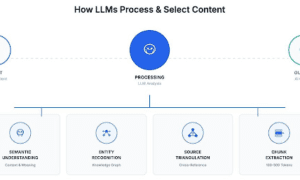Introduction
Artificial intelligence (AI) has become an integral part of the gaming industry, transforming virtual worlds and enhancing user experiences. The journey of AI in games dates back several decades, evolving alongside advancements in technology. In this article, we’ll explore the fascinating history of AI in games, from its humble beginnings to the sophisticated systems we see today.
The Evolution of AI in Game
1. Early Years, 1950s–1970s:
The seeds of AI in games were sown in the 1950s, when computer scientists began experimenting with simple game-playing programs. One notable example is the groundbreaking creation of “Nim” in 1951 by Christopher Strachey. Nim was a mathematical strategy game, and Strachey’s program could play it intelligently, showcasing early signs of AI in gaming.
As technology progressed through the 1960s and 1970s, AI researchers delved deeper into creating game-playing algorithms. However, the limited processing power and memory of early computers constrained the complexity of these AI systems.
2. Text-Based Adventures, 1980s:
The 1980s marked a significant era for AI in games with the rise of text-based adventures. Games like Zork employ simple natural language processing algorithms to interpret player commands. Though primitive by today’s standards, these systems paved the way for more sophisticated interactions between players and virtual worlds.
3. NPCs and Rule-Based Systems, 1990s:
The 1990s witnessed a surge in the popularity of role-playing games (RPGs) and the introduction of non-player characters (NPCs) governed by rule-based systems. These NPCs followed predefined scripts and decision trees, offering a semblance of intelligence. Games like “Ultima” and “Baldur’s Gate” demonstrated early attempts to create virtual characters with basic decision-making capabilities.
4. The Emergence of Neural Networks, Late 1990s to Early 2000s:
As computational power increased, AI in games took a leap forward in the late 1990s. Neural networks, inspired by the human brain’s structure, began making their mark. These systems enabled NPCs to learn from player behavior, adapting their strategies over time. The FPS (First Person Shooter) genre saw early implementations of adaptive AI, enhancing the challenge for players.
5. Procedural Content Generation, Mid-2000s:
The mid-2000s witnessed the integration of procedural content generation in games, a technique driven by AI. Games like “Spore” used algorithms to create dynamic and diverse game worlds, reducing the need for manually designed content. This not only enhanced the gaming experience but also significantly reduced development time.
6. Machine Learning and Dynamic AI, 2010s:
The 2010s marked a paradigm shift with the widespread adoption of machine learning techniques in gaming. Game developers started incorporating algorithms capable of learning and evolving based on player interactions. This dynamic AI led to more immersive and challenging experiences where NPCs could adapt in real-time to player strategies.
7. Deep Learning and Realistic AI—Present Day:
In recent years, the gaming industry has witnessed the integration of deep learning into AI systems. Deep neural networks enable more sophisticated decision-making processes, creating NPCs with human-like behaviors. Games like “Red Dead Redemption 2” and “The Last of Us Part II” showcase the potential of deep learning in delivering emotionally resonant and realistic AI interactions.
8. AI in Virtual Reality (VR) and Augmented Reality (AR):
The advent of VR and AR has further expanded the role of AI in gaming. These technologies demand more immersive and responsive AI systems to enhance the sense of presence and interaction. AI algorithms are now being utilized to create realistic avatars, dynamic environments, and personalized gaming experiences in the VR and AR realms.
Challenges and Future Directions:
While AI in games has come a long way, challenges persist. Balancing AI difficulty to cater to players of varying skill levels, avoiding predictability, and ensuring ethical use of AI in gaming are ongoing concerns. As we look to the future, the integration of AI in games is expected to deepen with advancements in natural language processing, emotional intelligence, and AI-driven storytelling.
Conclusion
The evolution of AI in games is a captivating journey that mirrors the progress of technology over the decades. From simple rule-based NPCs to deep learning-powered, emotionally intelligent characters, AI has become a cornerstone of modern gaming. As we move forward, the synergy between AI and gaming will undoubtedly continue to shape immersive, engaging, and innovative experiences for players around the globe. The future promises even more exciting possibilities as AI technology continues to advance, pushing the boundaries of what’s possible in the dynamic world of gaming.



































